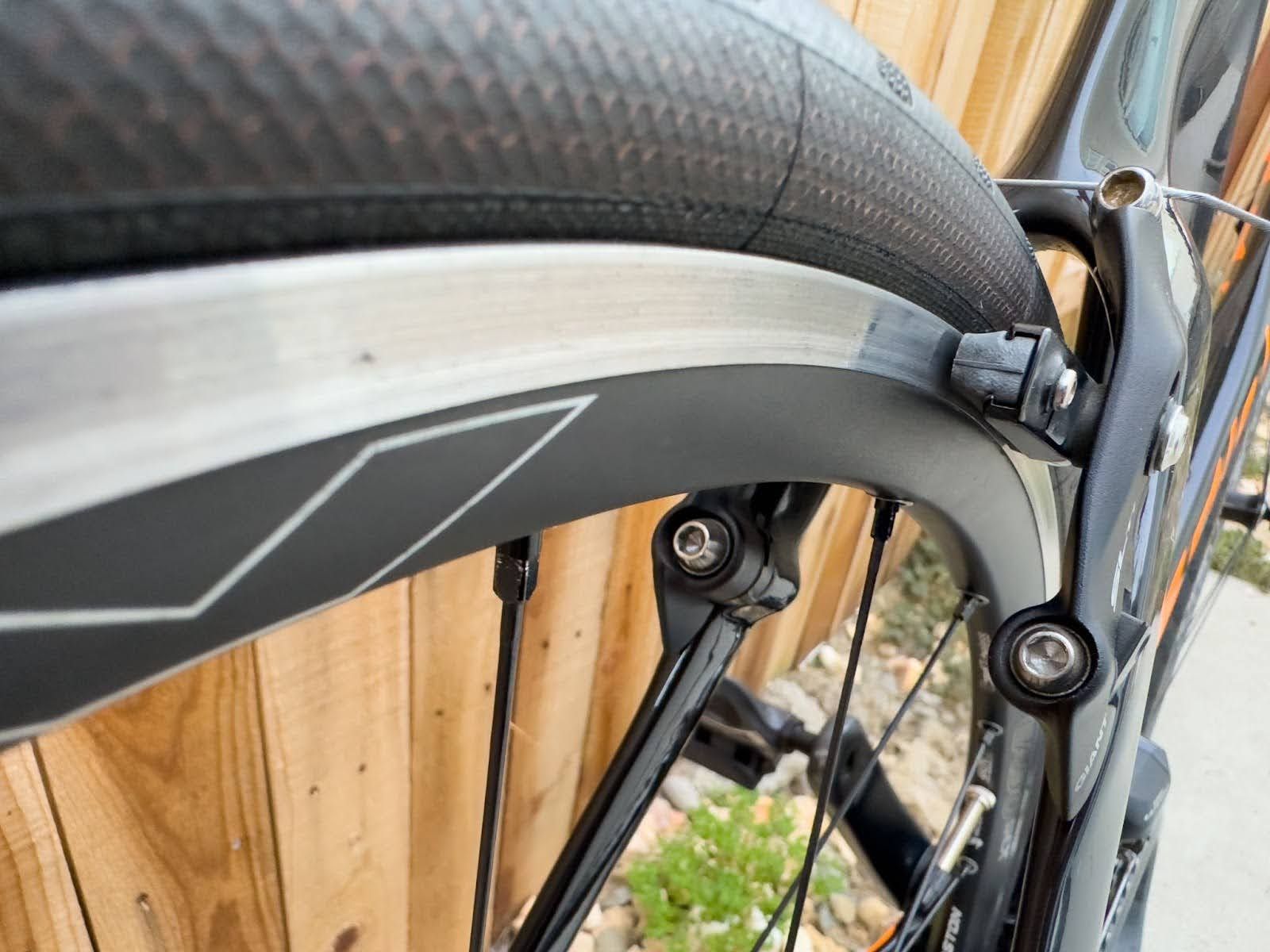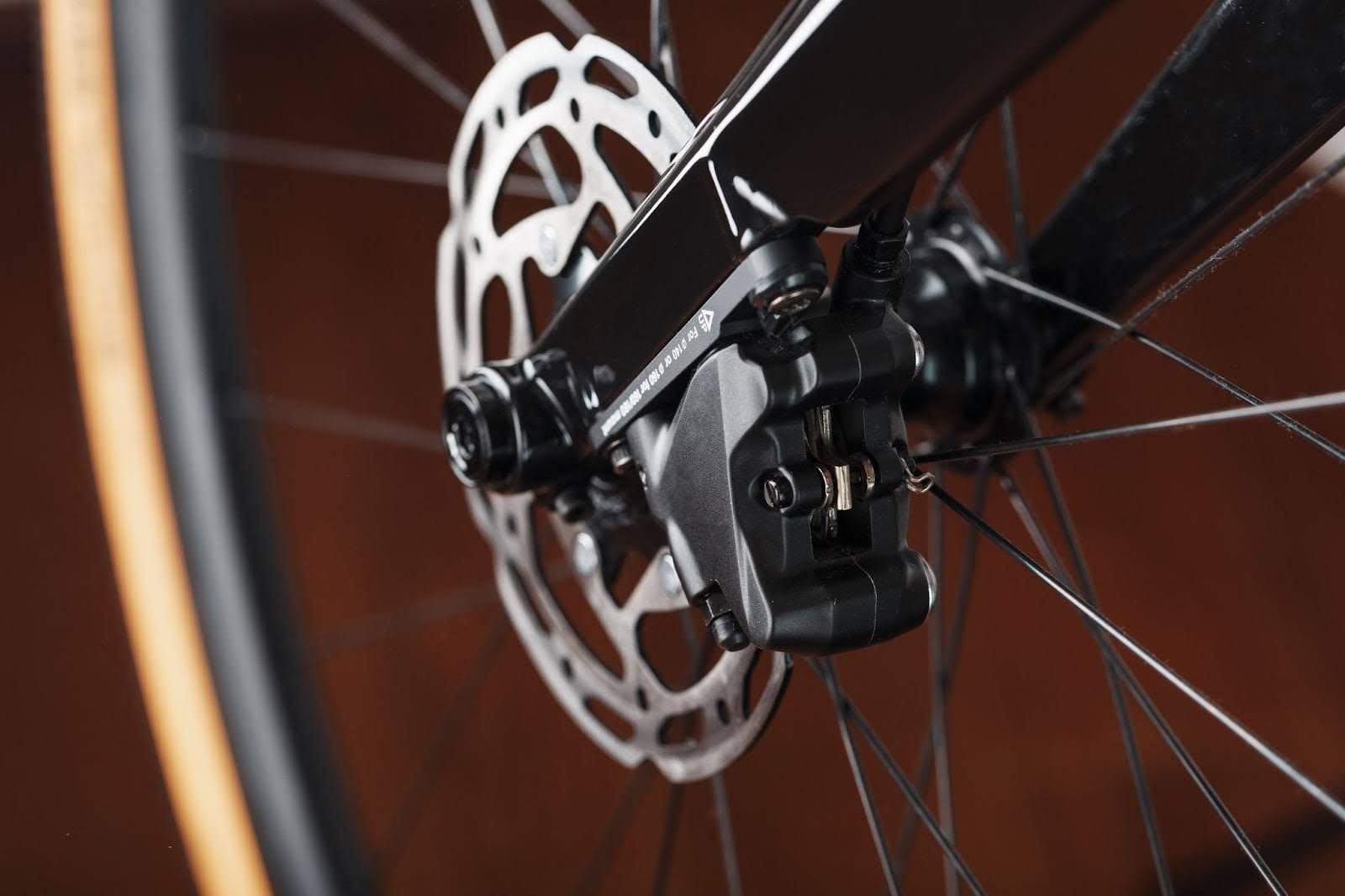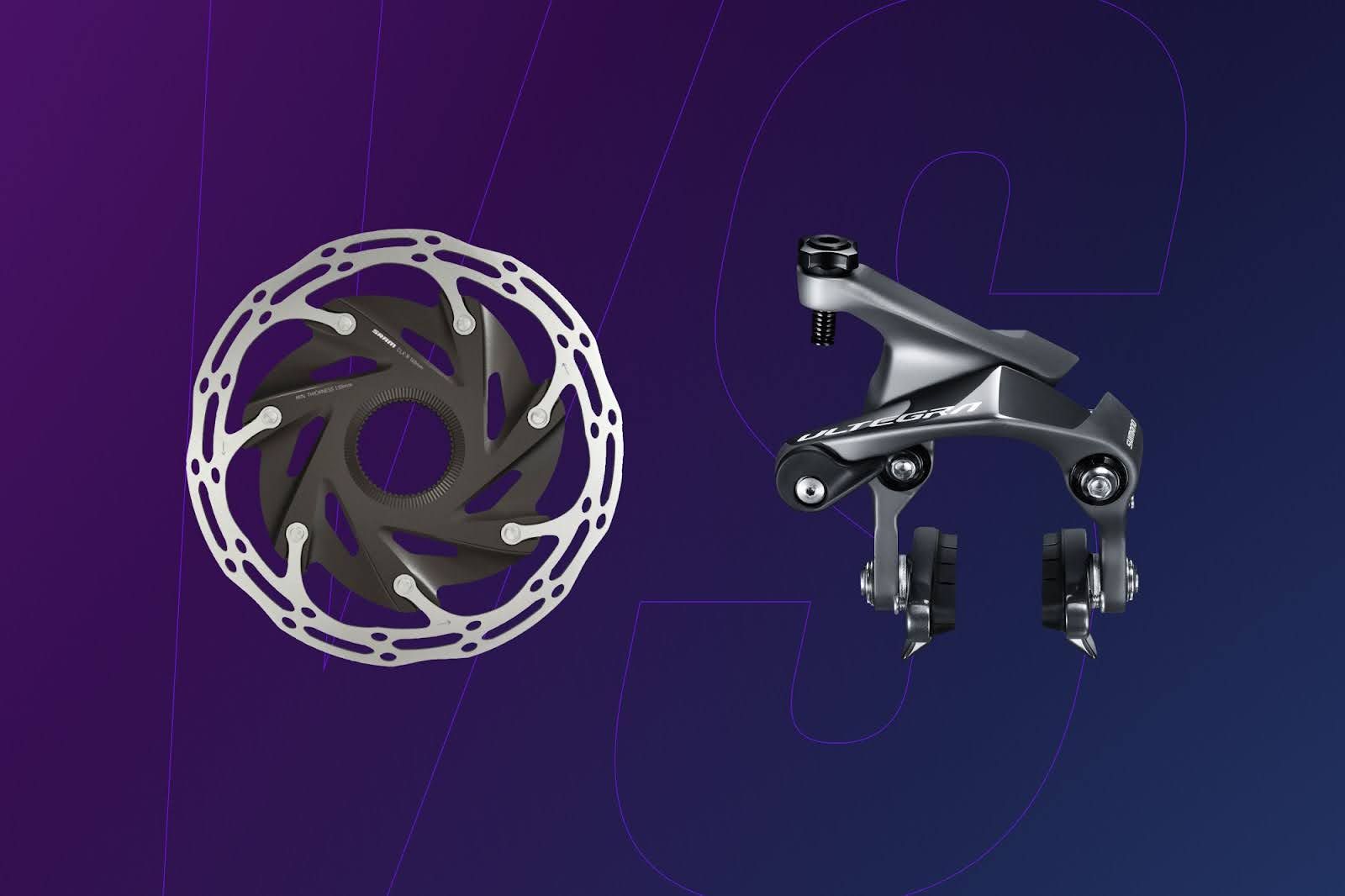ADVANCES IN BIKE BRAKING TECHNOLOGY: RIM VS. DISC
Braking systems have evolved substantially, enhancing control and safety. Disc brakes are increasingly preferred due to their:
- — Improved stopping power, crucial in high-speed descents.
- — Better modulation, offering a responsive braking feel.
- — Increased safety through consistent performance in varied conditions.
- — Enhanced aerodynamics, permitting aerodynamic frame designs and wider rims.
- — Wider tire compatibility, increasing comfort.
- — Reduced wear on wheels, as they don’t wear out the wheel rim.
- — Long descent endurance, with hydraulic systems reducing hand fatigue.

How Rim Brakes Work
Rim brakes apply friction to the rim to slow a bike. They are popular for their simplicity and cost-effectiveness but have limitations.
Pros:
- — Weight: They contribute less to the bike's overall weight.
- — Cost: Cheaper upfront and in maintenance.
- — Maintenance: Easier to repair and adjust.
- — Aesthetics: Some cyclists prefer their cleaner look.
Cons:
- — Stopping power: Inferior to disc brakes, especially on carbon rims or in wet conditions.
- — Heat dissipation: Can lead to "brake fading" during intense use.
- — Rim and tire width limits: Confined to narrower options, typically up to 28mm.
- — Tip: For long descents, use aluminum wheels to avoid heat-induced damage to carbon rims.

How Disc Brakes Work
Disc brakes use a rotor and caliper mechanism, with brake pads activated by hydraulic pressure, ensuring reliable stopping power under varied conditions.
Pros:
- — Consistent performance: Unaffected by weather or rim condition.
- — Maintenance: Hydraulic systems may require less frequent service.
- — Aesthetics: Cleaner look, especially with hidden hoses in electronic groupsets.
Cons:
- — Weight: They add weight due to the rotor and additional hardware.
- — Cost: Higher initial investment and potential repair costs.
- — Maintenance nuances: Traveling with disc brakes can be more complicated.
Comparing Disc Brakes and Rim Brakes: Which is Better for Cycling?
The debate involves various performance factors, like stopping power and modulation. Disc brakes are generally preferred, particularly in competitive cycling. However, rim brakes still play a role in road biking, whereas they are less common in gravel and MTB.
Cyclist Perspectives: Choosing Between Rim and Disc Brakes
Cycling disciplines influence brake choice. Disc brakes dominate in mountain biking, while rim brakes are favored by some commuters and road cyclists. Chris Froome, a four-time Tour de France winner, has expressed reservations about disc brakes, highlighting the diversity of opinions among professional cyclists.
Cost Factor
Disc brakes are more expensive initially and may require more sophisticated maintenance, impacting the total cost of ownership.
Latest Innovations in Cycling Brake Systems: Trends to Watch
Advances in materials and design are propelling braking technology forward. The integration of electronic systems with hydraulic disc brakes is a notable example of this progress.

Making the Right Choice: Rim or Disc Brakes for Your Bike
Cyclists must consider personal preference, riding conditions, and performance needs. While disc brakes offer improved control and safety, rim brakes remain a valid choice for certain applications.
Expert Tips for Rim Brake Users: Enhancing Performance and Safety
For those preferring rim brakes, especially with carbon rims, opt for wheels with grooved brake tracks for better wet-weather performance. Always use compatible rim brake pads, and avoid those used with aluminum wheels to prevent damage.
FAQs
Q: Which is better for mountain biking?
A: Disc brakes, due to their reliable stopping power and better performance on rough terrain.
Q: Are rim brakes becoming obsolete?
A: While less common in new, high-end models, they remain a viable option for certain uses and preferences.



